Mange in Dogs and Cats
MANGE IN DOGS AND CATS
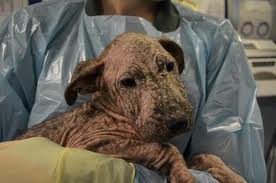
Mange in dogs and cats is a disease of the skin that causes hair loss and infections of the skin. It is most common in young short haired dogs between the ages of 6 and 12 months but can be seen in any aged dog or cat, especially those animals whose immune systems are not working properly such as neglected rescue animals or cats with FIV infections.
WHAT IS MANGE?
Mange is caused by a small mite that lives in the skin. There are two types of mange that dogs get because there are two different mites that cause disease. Demodectic mange in dogs is caused by the skin mite Demodex canis and Sarcoptic mange is caused the mite Sarcoptes scabei. Dogs with short hair and more prone to mange but the west Highland White Terrier is also susceptible.
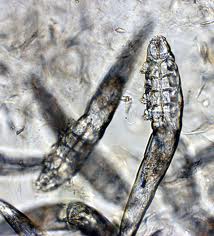
DEMODECTIC MANGE
The Demodex mite looks like a miniature crocodile or cigar with legs and causes hair loss. The mites live within the skin and most puppies are born with the mites in their systems. The immune system keeps their numbers under control but disease can flare up in puppies between the ages of 6 and 12 months and also in older animals who are immunosuppressed.
The mites mate and lay eggs inside the skin which causes the hairs to fall out and inflammation of the skin. A small slightly bald patch appears, often on the head and neck, but also on the legs and body in puppies. Owners often think the puppy has ringworm or allergies, but in many cases the bald patch isn’t itchy at all and is only worried about when the patch gets big or multiple patches appear on the body.
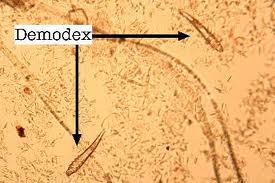
Older dogs can get a severe recurring form of mange where the mites affect the skin of the feet and round the mouth. This type of mange often gets wet and infected and dogs get boils and pustules in the skin which respond to antibiotics but come back as soon as the antibiotics are finished.
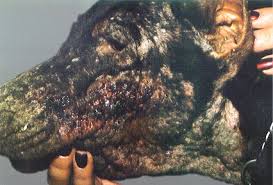
Demodex isn’t contagious which means your dog won’t give it to another dog and it doesn’t affect people at all. Cats most often present with itchy, crusty faces and ears when they have mange. Cats are either infected with Demodex cati or Demodex gatoi.
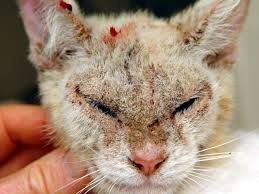
SARCOPTIC MANGE
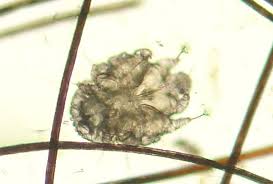
Sarcoptic mange is a very itchy type of mange and if often confused with skin allergies. It can affect any age of dog, is contagious to other dogs and also to people. In people the disease is known as Scabies and is also very itchy with small pimples and a rash seen on the lower belly and upper groin area.
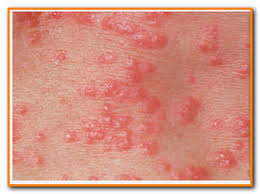
The Sarcoptes mange mite looks like a spider under the microscope with a big round body and little legs.
Dogs affected with Sarcoptic mange typically get very itchy all over but scaling, redness and hair loss can be seen on the elbows and ears in some cases.
DIAGNOSING MANGE
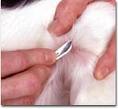
Demodectic mange is easily diagnosed by your vet. It can be seen under the microscope when your vet does a test known as a skin scraping. A blade with oil or paraffin is rubbed on the top of the bald patch of skin to get mites and flakes of skin off. Your vet will check the scraping under a microscope to see if there are Demodex mites present. If there is any baldness and mites are seen, it is best to treat for Demodectic mange.
Demodectic mange can also be picked up on a skin biopsy. These will be taken in severe or recurring skin disease to look for the underlying cause of disease. Sometimes in severely thickened skin, the mites are not easily seen on a skin scraping, but can be picked up on a biopsy and should always be treated.
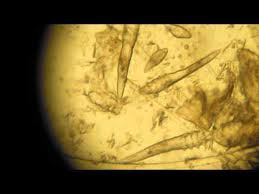
Sarcoptic mange is hard to pick up. If your vet is lucky, it will be seen on a skin scraping but not commonly. They may not be picked up on biopsy either. If your vet suspects that your dog may have Sarcoptic mange, he or she will treat for it. A careful history will also aid diagnosis – for example of more than one pet is affected, the owner has a curious itchy rash or the dog is intensely itchy and doesn’t respond to steroid injections (cortisone.) The treatment is much easier than the diagnosis as the mites are tricky to find!
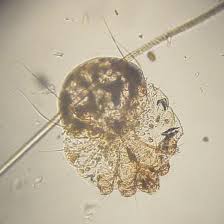
TREATING MANGE
Sarcoptic mange is easily treated with monthly prescription flea drops such as Advocate, Stronghold or Revolution. The drops are applied to the back of the neck in a dirty dog and work within 48 hours. Collies are related breeds may not be able to use these drops and may need to be dipped.
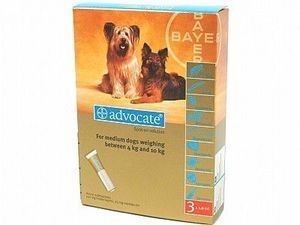
Demodectic mange can also be treated with the above mentioned flea products but some cases are resistant to the drops and will need weekly dips with a very strong insecticide. Examples are Aludex and Amitraz. Most vets will dip your dog once or twice a week at the vet’s rooms as the dip can be toxic, especially if it is swallowed by the pet. Certain worming tablets that contain Milbemycin will also help in the treatment of Demodectic mange but may not cure the dog, just control the infection. Collies and related breeds may not be able to take these tablets. Some countries will stock an ointment with a small amount of pesticide in it that can be used to treat very small patches of Demodectic mange, or mange on the face, for example, where there is a concern that the dog will swallow the dip.
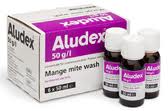
There are also injections of Ivermectin or Doramectin that can be used by your vet, off license in some countries that help to kill the mange mites.
Puppies will be either treated monthly with the drops on the back of the neck until there are two negative skin scrapings two weeks apart, or dipped weekly until there are two negative skin scrapings two weeks apart. Puppies that are being dipped should not be using the flea drops on the back of the neck at the same time. Puppies on the ointment should also have two negative scrapings two weeks apart. Most of these puppies will be cured once the course is complete.
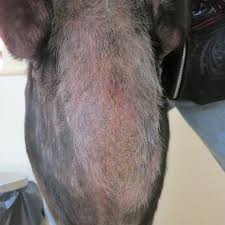
Older dogs with recurring Demodectic mange often have immune disorders. These dogs may never fully recover and some will need treatment such as the dips when the skin is bad and the worming tablets or drops on the back of the neck for life to keep the disease under control. These dogs can also be prone to getting nasty bacterial skin infections with boils and pustules especially on the feet and legs and round the mouth. These dogs will need antibiotics for 8-12 weeks to clear the infection up as well as treatment for the mange.
Cats can be treated with the flea drops and the worming tablets or injections but cannot be dipped or use the ointment as this is too poisonous for them.

Leave a Reply
You must be logged in to post a comment.